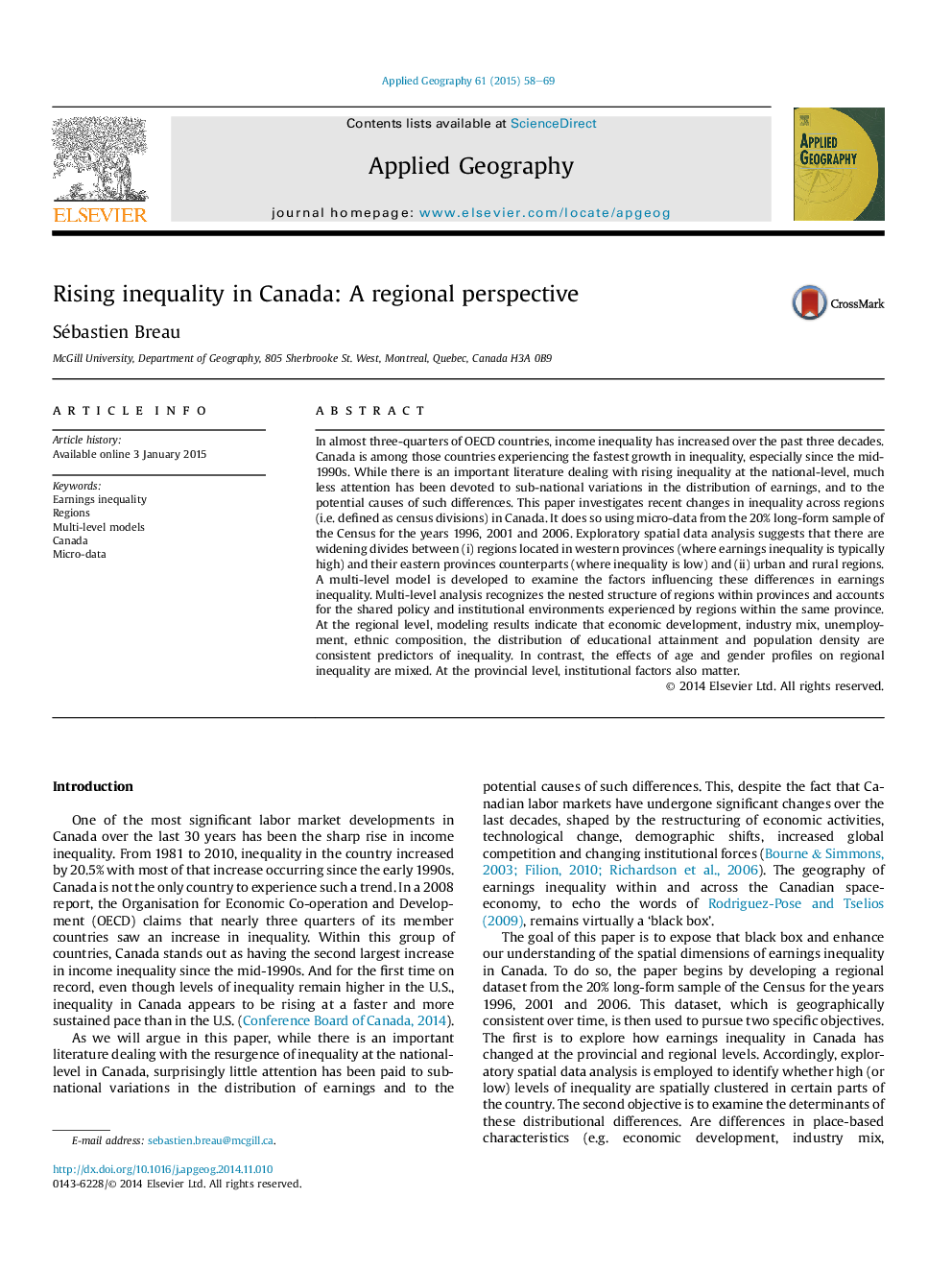| کد مقاله | کد نشریه | سال انتشار | مقاله انگلیسی | نسخه تمام متن |
|---|---|---|---|---|
| 83223 | 158701 | 2015 | 12 صفحه PDF | دانلود رایگان |
• Regional patterns of earnings inequality are examined in Canada.
• A multi-level model is developed to investigate the determinants of regional inequality.
• Labor market, socio-demographic and institutional variables are key factors explaining differences in regional inequality.
In almost three-quarters of OECD countries, income inequality has increased over the past three decades. Canada is among those countries experiencing the fastest growth in inequality, especially since the mid-1990s. While there is an important literature dealing with rising inequality at the national-level, much less attention has been devoted to sub-national variations in the distribution of earnings, and to the potential causes of such differences. This paper investigates recent changes in inequality across regions (i.e. defined as census divisions) in Canada. It does so using micro-data from the 20% long-form sample of the Census for the years 1996, 2001 and 2006. Exploratory spatial data analysis suggests that there are widening divides between (i) regions located in western provinces (where earnings inequality is typically high) and their eastern provinces counterparts (where inequality is low) and (ii) urban and rural regions. A multi-level model is developed to examine the factors influencing these differences in earnings inequality. Multi-level analysis recognizes the nested structure of regions within provinces and accounts for the shared policy and institutional environments experienced by regions within the same province. At the regional level, modeling results indicate that economic development, industry mix, unemployment, ethnic composition, the distribution of educational attainment and population density are consistent predictors of inequality. In contrast, the effects of age and gender profiles on regional inequality are mixed. At the provincial level, institutional factors also matter.
Journal: Applied Geography - Volume 61, July 2015, Pages 58–69
